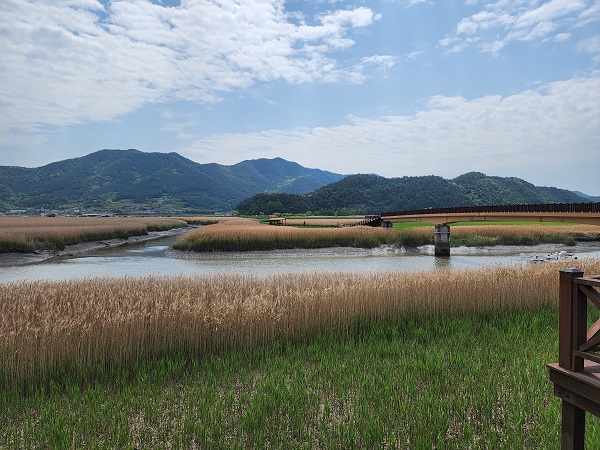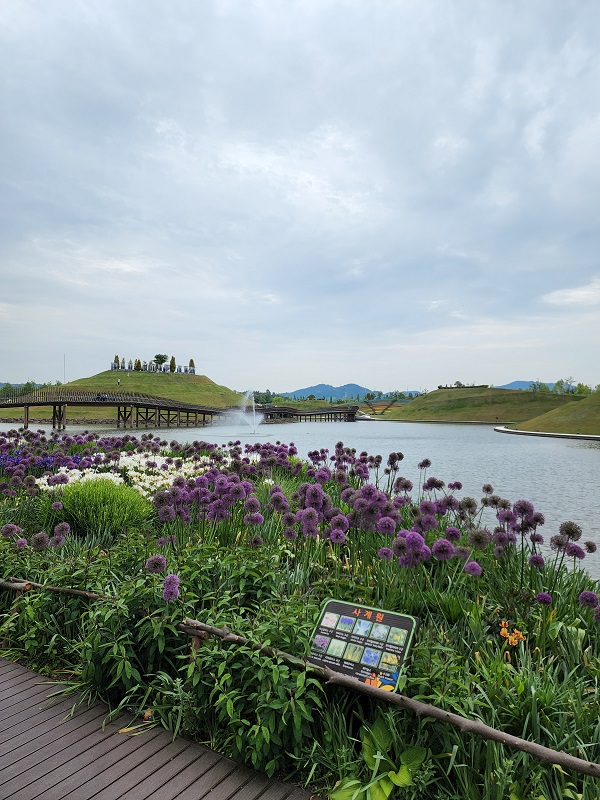Most people going to South Korea will go to the trio of destinations – Seoul, Busan and Jeju. Often neglected is the area of Jeollabuk-do in the south, which is more frequented by local travellers and less tourist-friendly. As such, there are also fewer English translations available at their tourist attractions, and in restaurant and cafe menus, making it a more challenging location for non-Korean-speaking visitors.
This trip to Korea I decided to do two rather challenging (or foolhardy) things. To rent a car and drive on the mainland and to bring along a friend who doesn't speak a word of Korean. I am happy to report that both panned out to be good decisions and opened a whole new world of South Korea to me.
I will start off my travel series article with Suncheon, a place where most travellers do not include as one of their travel destinations. However, I have realised during this trip that it is such a treasure trove of spots to visit. It is also a convenient destination for short trips out, especially if you drive.
Staying in Suncheon
We stayed at Baguni Hostel, located fairly near the central of Suncheon. I was initially a little apprehensive about staying in a hostel. However, it was highly recommended from a bespoke Korean webpage for accommodations, so I decided to give the private room a try.
Baguni Hostel received the Good Design Award in 2017. It is situated in a trendy location of the town (more about that later). There is an industrial feel to the place with bare concrete walls and floors. However, it is clean, and the toilets are well renovated. They supply rubber slippers useful for the showers, which are not separated from the toilet (a common finding in Korea accommodations so take note). An interesting coin system is employed by the hotel which comes in handy when you use some of their facilities. We were given 24 coins on check-in for our stay of two nights. Four coins are used per person for breakfast and four coins for laundry.They also have other facilities such as bicycle rentals.
Even more interesting is that within walking distance are the two hottest eating places in Suncheon.They are described by the staff in the hostel as "hot places", the latest Korean term for trendy areas!
Visiting "hot" places
Suncheon is known for its craft beers and Suncheon Brewery is one of the famous breweries that use local ingredients. For those who love drinking, this is really a find. However, as I am not that great of a drinker, I ordered the tasting platter and left it to the discretion of the staff to choose their most popular versions. I loved the peach-flavoured beer best. Suncheon is also famous for its wild peaches, and the beer was sweet and flavoured with a strong peach aroma at a low eight percent alcohol content. It is something that light drinkers would certainly enjoy. Their sausage platter was also a great addition. Other options include hand-crafted burgers from Crane Burger.
Just next to Suncheon Brewery on the same plot of land, opened by the same group of people, is the Brewery. It is a cafe opened on the grounds of an old industrial factory, selling coffee, alcohol and baked goods. As in many areas in South Korea, the space is very large.The owners were able to decorate it such that all spots were "Instagrammable". Be sure to check out their vending machines with very interesting products for purchase; definitely worth a visit. I won't say much more so please check it out yourself!
Within the main Suncheon town area, there are a few tourist attractions. Probably the most famous of them are the Suncheon marshlands and gardens. I allocated only half a day for it but realised that a full day is necessary to experience the whole area. Also of interest is the drama-theme park (Suncheon Open Film Set) which is a must for those who are into K-drama.
I would recommend using Suncheon as a base to travel to Damyang, which is famous for its bamboo forest, and to Boseong for its green tea plantation. As a stop between Suncheon and Boseong, the Nagan Eupseong Folk Village is another unique location to visit.
Soaking in nature's beauty
Suncheon Bay Ecological Park is an estuarine tidal flat famous for its reeds, extensive wildlife and bird spotting. For Singaporeans going overseas, the extensive open area is always something we crave and it is a perfect area to appreciate the vastness of nature.
The actual marshland of the park is reachable from the Suncheon Bay National Gardens () via their monorail-type transportation called the Sky Cube. Since the ride only spans 1.2 kilometres, we expected it to be fairly short journey. To our surprise, it turned out to be nearly 15 minutes long, definitely making it worth the cost of the ticket!
A fun fact is that the gardens were developed as a means of thinning out the crowd waiting to get to the marshland. The entirety of the gardens span 1.12 million square kilometres!
I visited during COVID-19 times so there were hardly any visitors, but I can imagine how busy it would be during peak seasons. And anticipating that there will be a special programme with the Suncheon International Gardens Expo next year, the gardens will definitely be necessary.
The entire marshland has boardwalks over it for visitors to walk on, and along the boardwalks are shaded seating where you can rest your legs if the walking gets too tiresome. The reeds seem to have been trimmed to maintain a more aesthetic appearance, but it still looks very natural. Be sure to keep an eye out for birds within the reeds, especially the black cranes, and watch the mud for mudskippers, more commonly as goggle-eyed goby. Crabs are also present in this ecosystem. Interestingly, a signature dish of this area is mudskipper soup, made with the previously mentioned goggle-eyed goby. You will see many people walking around with telephoto lenses. For the photography enthusiasts, this is definitely a great opportunity, whether for Instagrammable shots or the National Geographic-worthy shots of the cranes.
At the entrance to the park is a small area with food and drinks for those who need refreshments. It is also here where there is an electric bus that brings you back to the Sky Cube station. The bus runs fairly frequently, arriving every 15 minutes.
The gardens are divided into regions with each region's landscaping modelled after different countries. When visiting during the different seasons, there are new and interesting experiences. Late spring, when I visited, was the season for roses, and they had just begun to bloom. The extensive field of roses was a sight to behold. In the gardens are also many open spaces where performances are held. When I visited, there was a variety show recording going on, which was quite fun to watch. The national gardens really are a very large area and properly visiting every garden with enough time to take photos will easily take two whole days. It is also a great exercise regime!
Don't forget to also look for the pink flamingoes which are kept in a small pond near the entrance to the gardens. I have never seen so many flamingoes together in one place before!

The Suncheon marshlands is a sight not to be missed

Beautiful flowers that line the garden pathways